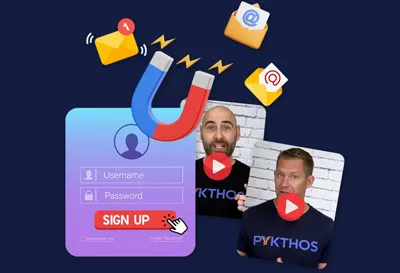
Start Simple, Get Paid: The 3-Step Plan to Launch Your Practice Without a Website
Start Simple, Get Paid: The 3-Step Plan to Launch Your Practice Without a Website

You worried about not having a website?
Fear not. If you need clients now, and aren’t ready to build out your website yet, let me put your mind at ease.
You can absolutely start taking clients before building a polished website.
But let’s step back for a second, because without proper focus, you’re going to burnout.
You know you can help people. You've got the training, the testimonials, the calling. Maybe you've even got a
few clients who sing your praises and tell their friends about your sessions. But there’s one thing missing:
A business that actually looks and feels like a business.
Every time you sit down to "work on your practice," you spiral into a digital to-do list that could choke a goat:
"I need a website... but not just any website—one with funnels and lead magnets and SEO."
"I should start a blog... or maybe a podcast? Both?"
"What if I get on TikTok and Instagram and YouTube and... LinkedIn too?"
"Do I need an LLC first? A CRM? A newsletter? A brand photoshoot?!"

You’re not alone. This is the silent burnout zone where heart-led practitioners stall out. You want to help. You
want to earn. But you're stuck in the shame-spiral of "I should already have all of this figured out."
When Even the Good Stuff Feels Too Big
Let’s be honest: even when someone hands you a perfectly organized, high-value roadmap—like our beloved
Pykthos Growth Framework—it can still feel like trying to assemble IKEA furniture during an earthquake.
You know it works. You want to use it. But your brain is on fire, and you’re just trying to remember if you sent that
last intake form.
That’s why we’re inviting you to hit pause... and build the damn skateboard.
What Is the Skateboard Strategy?

The idea is simple: when you're stuck at zero (or close to it), don't try to build the Tesla of online businesses.
Build a skateboard.
What? A skateboard? Bear with me because “skateboard” is just metaphor for a minimum viable version of your business.
A skateboard is useful, but limited. It can get you from A to B, but you can’t have a passenger. You can’t really use it off-road. It’s not very good going up hills.
Similarly, a minimum viable online presence is something you can roll out easily to get moving now while you figure the rest out later.
And it only takes three steps.
Step 1: Get a Booking Link

You don’t need a full website. You don’t need a funnel. You don’t need a logo, a tagline, or a color palette pulled from your childhood traumas.
You need one single link where people can book a session with you.
Use a tool like Pykthos to set up a branded calendar page. Slap your name on it. Include a photo and a sentence about how you help. Boom. You’ve got a front door.
Imagine this:
Helen is a hypnotherapist who’s been putting off her online presence for months. She sets up a Pykthos calendar page in under 30 minutes, shares the link on Facebook, and by the end of the week she’s got her first paid session booked. No website. No ads. Just clarity.
Step 2: Get Eyes on That Link
Now that you have a door, let’s invite people to walk through it.
This doesn’t mean becoming a full-time content creator. Pick one way to get in front of humans:
Tell your friends and ask for referrals
Post value-driven content on the platform you’re most comfortable with
Speak at local events or host a free mini-class
Hand out business cards at your yoga class
Send a “Hey, I’m open for sessions” email to your list of 12 people
You don’t need perfect traffic strategies. You need movement.
Johnny used to run a construction company by word of mouth. Now he's pivoting to therapeutic art sessions. He prints 25 cards with his booking link and hands them out at a community event. Within a week, he’s running Zoom sessions with new clients who feel like old friends.

Step 3: Track What Matters
Let’s keep it basic. Here are the only three metrics to care about in the beginning:
How many people saw your link? (Eyeballs)
How many clicked and booked a call? (Action)
How many paid you? (Conversion)
This tells you exactly where to improve because even the most basic data tells a story.
If you’re not getting clicks, either nobody is seeing your content, or your content isn’t resonating with them. You’ll adjust how you talk about your offer.
If people book discovery calls but don’t buy paid sessions, you’ll know you need to work on how you sell during your discovery calls.
You are now running a real business.

The Emotional Truth
Most people don’t stall because they’re unqualified. They stall because deep down, they’re afraid that starting small means they aren’t serious.
But starting scrappy doesn’t make you less professional. It makes you practical.
You’re not trying to go viral. You’re trying to get viable.
Let the polished website, complex funnels, and long-term strategies come later. Right now, build the thing that rolls.
And when you’re ready to expand beyond the skateboard? We’ve got your blueprint.
👉 Grab the Pykthos Growth Framework here — it’s the same system we use in our mastermind to help practitioners grow real, sustainable businesses. No tech overwhelm. No fluff. Just results.






